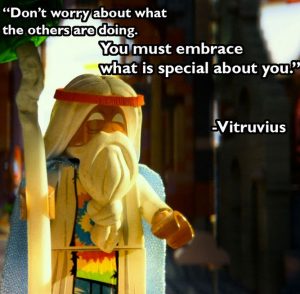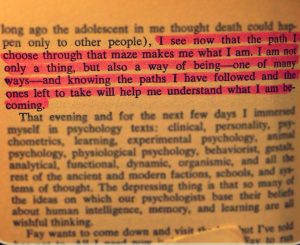As difficult as dirty dishes can be, they’re even worse when you let them sit for a while. And the longer they sit, the harder they are to clean.
This is life. Something that is potentially easy to clean up right after it happens – an unkind word to your father, a lie to your best friend, an insensitivity to your girlfriend – can become a difficult mess if you don’t deal with it now.
Do the dishes today.
I have been thinking about Kaizen a lot. Kaizen can be the saving grace for a lot of people, because Kaizen is a way of life, a non-threatening way, but it is an awake way, and most of us are not awake, get jolted out of our sleepwalking by big things only. I am awake, and Kaizen is for me.
So I decided to use Kaizen to ease back into exercising. Since I stopped exercising, my face aged 10-20 years. That is a lot. I used to have no wrinkles, now I have folds, and wrinkles inside the folds… not pretty.
I have no special occasion to be pretty at, I just think that looking into the mirror should be a joyous occasion, not an occasion to berate myself.
So I am now doing 15 seconds of the exercise I used to do. I am happy. It is starting to show on my face. Hm.
Another Kaizen thing: in airplane bathrooms there is a sign that says something like this: would you be so kind as to use your paper towel to clean the sink before you throw it away?
Very Kaizen. Imagine going to the bathroom and someone’s soapy dirty washwater is still in the sink. (The airplane sink stopper needs to be manually lifted, otherwise it stops the water from emptying…) I would never wash my hand again on an airplane. But with that little Kaizen note, most 99% of the passengers follow the instructions, and everyone washes their hand. (I think that sign also reminds people to wash their hands, which many people don’t see a reason for… ).
And the third Kaizen example I read about in a Kaizen book, and it is about Toyota. The factory. They learned Kaizen from Americans… who would have thought… from Americans.
At Toyota, manufacturing cars happens on the assembly line. Nothing new there. In a normal assembly line everyone is concerned only about their part of the assembly, and the occasional errors are noticed and corrected, or not noticed and not corrected at the quality control station.
Toyota’s then CEO installed a rope switch above every workstation along the assembly line, where workers were asked to pull the rope every time they noticed an error in the work on the half-assembled car in front of them. The pull stopped the assembly line, they corrected the error, and pulled again to re-start…
It was a heretic idea, going counter with mass production. American auto manufacturers, that relied on quality control, had thousands of cars recalled, paid billions in restitution for tiny errors that weren’t corrected right after they happened.
Toyota went on to become the most reliable car. 250K cars are still sold and they run the highways: it
Read the rest of the article






